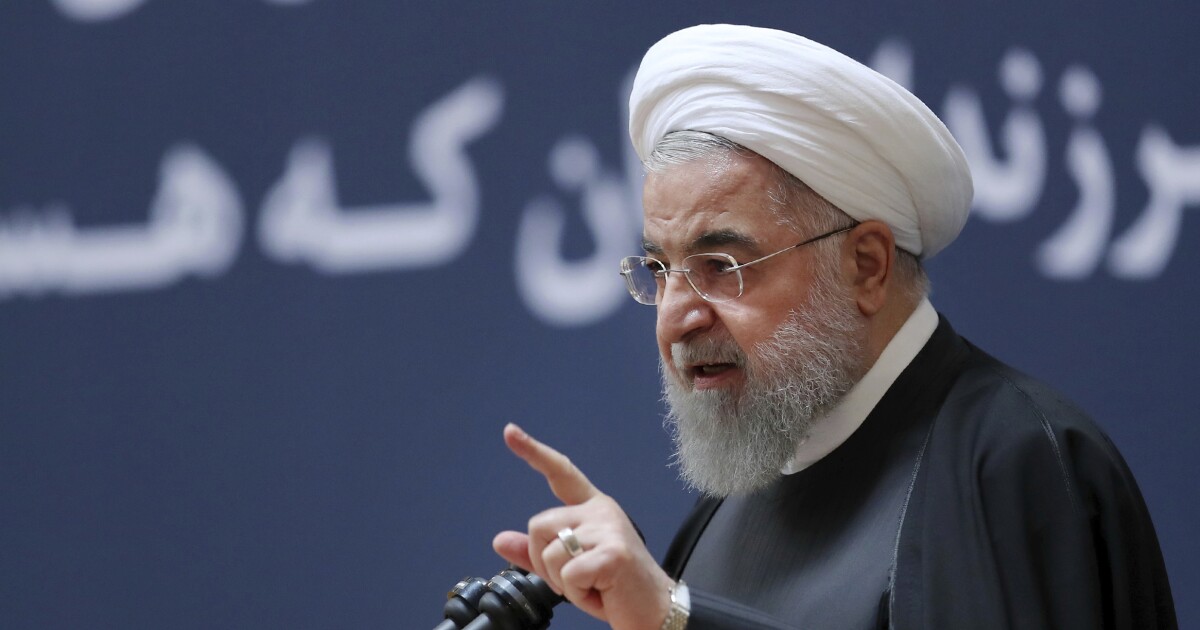

Iranian leaders are not pursuing a nuclear weapons program but have the capacity to produce enough fissile material for a nuclear device in a matter of weeks, according to the Department of Defense.
The department’s analysis is laid out in its Strategy for Countering Weapons of Mass Destruction, which was released late last week, though the estimation remains consistent with previous ones.
INCOMING CALIFORNIA SEN. LAPHONZA BUTLER’S ADDRESS SHOWS HER LIVING IN MARYLAND
“It is assessed that Iran is not pursuing a nuclear weapons program at this time, but has the capacity to produce enough fissile material for a nuclear device in less than two weeks. Further, the United States assesses Iran to be noncompliant with its [Chemical Weapons Convention] obligations,” it states. “For example, Iran has not submitted a complete chemical weapons production facility declaration to comply with CWC processes. The United States is also concerned that Iran is pursuing dual-use central nervous system-acting chemicals for offensive purposes.”
The assessment is similar to one provided by former Undersecretary of Defense for Policy Colin Kahl last February when he told lawmakers that Tehran could produce “one bomb’s worth of fissile material” in “about twelve days.”
Tehran’s ability to produce the material in a matter of weeks does not mean that it can produce a nuclear weapon in that time period.
The Biden administration sought in its infancy to restart the 2015 Joint Comprehensive Plan of Action, a nuclear agreement, that then-President Donald Trump withdrew from in 2018, though prospects of its reincarnation have failed.
The relationship between Tehran and Washington remains shaky as Iran’s Islamic Revolutionary Guard Corps navy has continued to harass commercial and U.S. vessels and aircraft in the region. U.S. Naval Forces Central Command spokesman Cmdr. Rick Chernitze said last week that Iran’s naval forces repeatedly aimed a laser at an American military helicopter conducting a routine flight in international airspace, though no one was injured and the aircraft was not damaged.
Over the past two years, Iran has attacked, seized, or attempted to seize about 20 internationally flagged merchant vessels in the region, according to the U.S. military.
Additionally, the Pentagon is “actively looking” into whether Ariane Tabatabai, the chief of staff to Assistant Secretary of Defense for Special Operations and Low Intensity Conflict Christopher Maier, was a part of an influence operation orchestrated by Tehran over a period of years.
“We are actively looking into whether all law and policy was properly followed in granting my chief of staff top secret, special compartmented information” clearance, Maier said on Thursday during a House Foreign Affairs Committee hearing. He could not say, when asked, whether she had undergone a polygraph test or had fully documented any past connections with foreign officials.
CLICK HERE TO READ MORE FROM THE WASHINGTON EXAMINER
Tabatabai was allegedly a part of Tehran’s effort known as the Iran Experts Initiative, according to Semafor. She allegedly “checked in” with the Iranian Foreign Ministry on at least two occasions before attending policy events. Prior to obtaining her current position, she worked for Robert Malley, the State Department’s special envoy to Iran, whose security clearance was revoked earlier this year, though the department has not provided any details about why that occurred.
Also earlier this month, the U.S. and Tehran agreed to a prisoner swap in which Iran released five Americans who had been imprisoned in Iran and two relatives who had been barred from leaving the country, in exchange for the release of five Iranians in the U.S. legal system and the promise of access to $6 billion of their own money that had been frozen overseas.






